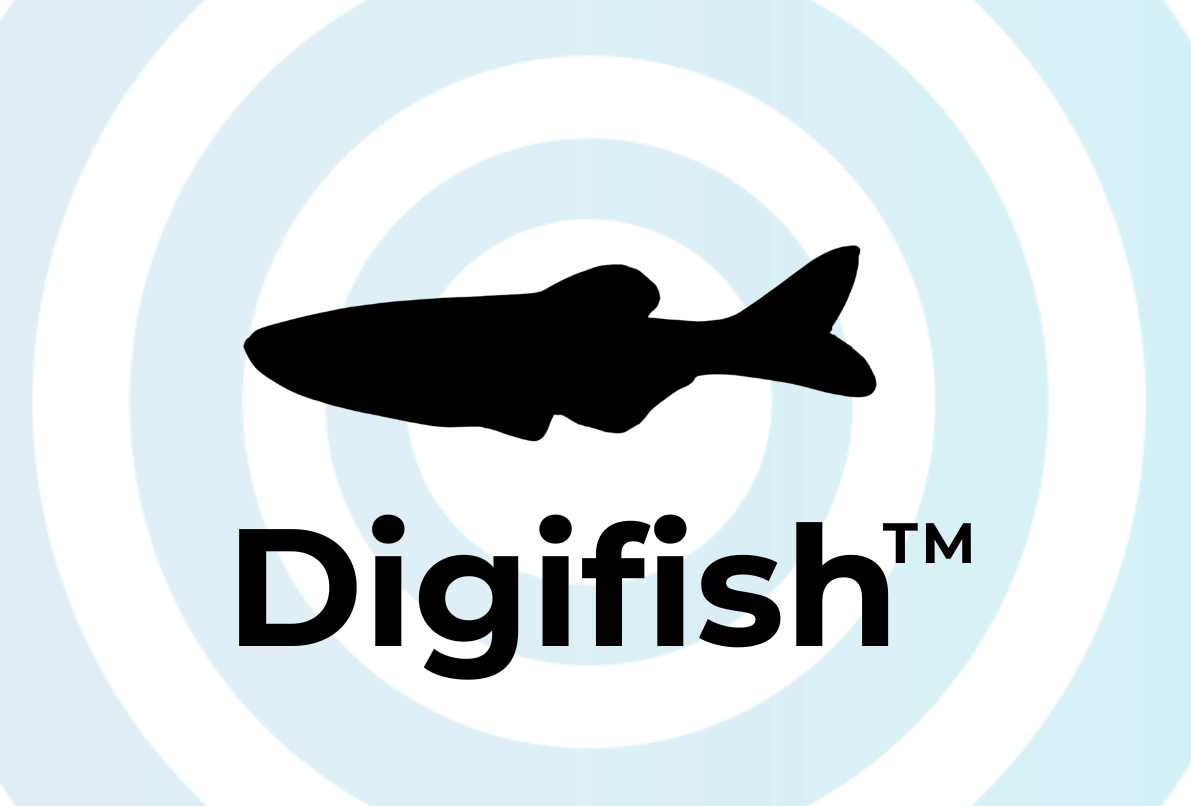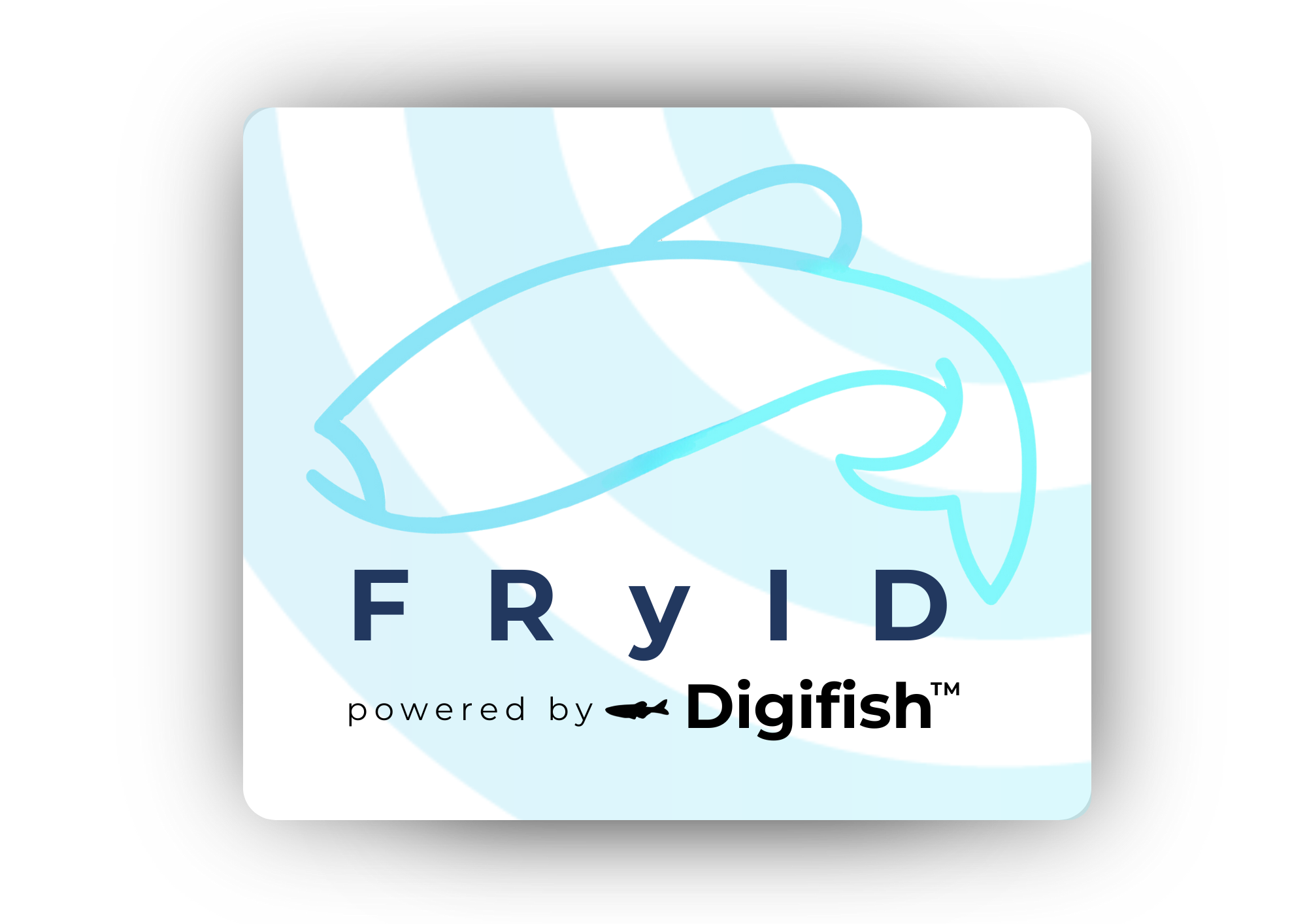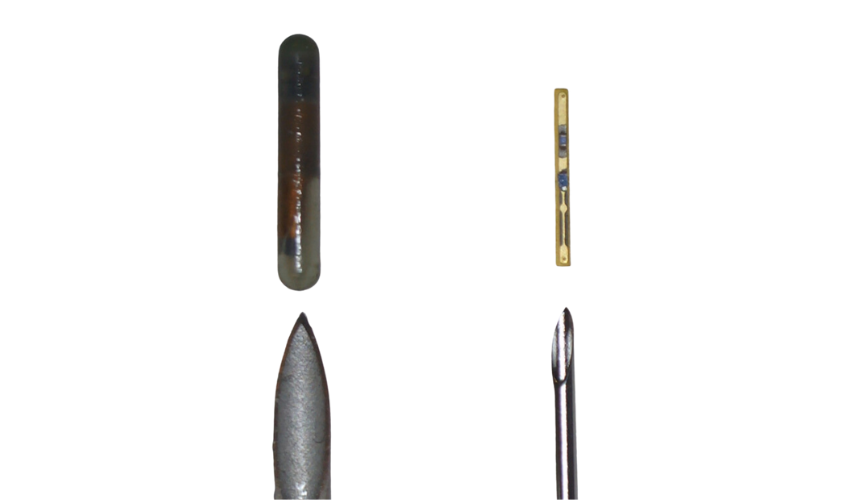
DIGIFISH™ TAG
RFID fish tracking for automated fish colony monitoring
Digifish™ RFID Fish Tracking Tags
A new, innovative application of our RFID technology. The world’s smallest RFID fish tracking tag can now be deployed to streamline your laboratory and non-laboratory fish programs, improving the efficiency of data collection.
- Introduction
- Features
Digifish deploys the same RFID technology that has transformed laboratory mouse identification methodologies, namely Digitail.
Glass transponders and other RFID fish tracking tags have a form factor that is often incompatible with the smallest size classes of many commonly studied fish, as well as the physiology of many delicate species. Other conventional marking methods for these fish fail to offer unique individual identification.
To address the problems related to identification of fish during preclinical and environmental research, Somark began the independent testing of the suitability of our tag for RFID fish tracking.
Digifish is the world’s smallest RFID tag, specifically designed to prioritize animal welfare.It is 16 times smaller than the typical glass transponder found for RFID tracking in fisheries research settings, and far less invasive than common fish tagging routes.
The tag is 6mm long, 0.5mm wide and only 0.25mm high. The impressive 0.75mm volume is what makes our tag remarkably suitable for the RFID fish tracking of species such as zebrafish. The monitoring of juvenile life stages of many fish species has proved difficult previously with no reliable options for RFID fish tagging with unique identifiers.
The tag has a permanent 24-character ID which can be read by a UHF reader. The injector needles are provided pre-loaded which ensures that the process of applying Digifish to your school/shole is quick, reliable and can be conducted by even novice technicians and researchers.
Digifish deploys the same RFID technology that has transformed laboratory mouse identification methodologies, namely Digitail.
Glass transponders and other RFID fish tracking tags have a form factor that is often incompatible with the smallest size classes of many commonly studied fish, as well as the physiology of many delicate species. Other conventional marking methods for these fish fail to offer unique individual identification.
To address the problems related to identification of fish during preclinical and environmental research, Somark began the independent testing of the suitability of our tag for RFID fish tracking.
Digifish is the world’s smallest RFID tag, specifically designed to prioritize animal welfare.It is 16 times smaller than the typical glass transponder found for RFID tracking in fisheries research settings, and far less invasive than common fish tagging routes.
The tag is 6mm long, 0.5mm wide and only 0.25mm high. The impressive 0.75mm volume is what makes our tag remarkably suitable for the RFID fish tracking of species such as zebrafish. The monitoring of juvenile life stages of many fish species has proved difficult previously with no reliable options for RFID fish tagging with unique identifiers.
The tag has a permanent 24-character ID which can be read by a UHF reader. The injector needles are provided pre-loaded which ensures that the process of applying Digifish to your school/shole is quick, reliable and can be conducted by even novice technicians and researchers.










